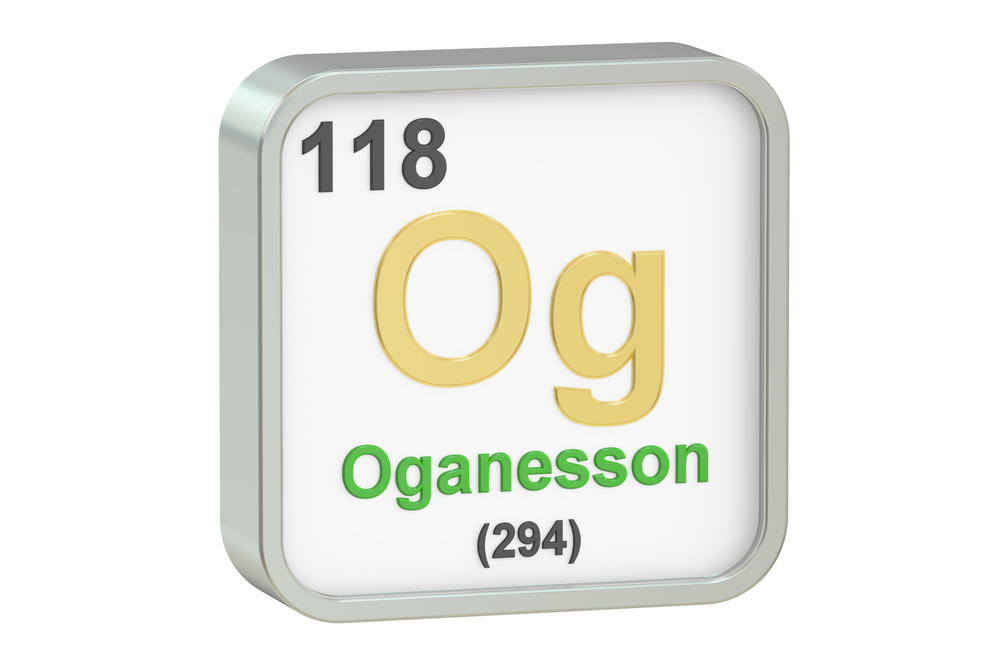Facts About Oganesson (Element 118)

Oganesson is a radioactive, artificially produced element about which little is known. It is expected to be a gas and is classified as a non-metal. It is a member of the noble gas group.
The element, No. 118 on the Periodic Table of Elements, had previously been designated ununoctium, a placeholder name that means one-one-eight in Latin. In November 2016, the International Union of Pure and Applied Chemistry (IUPAC) approved the name oganesson for element 118.
The IUPAC also approved names for elements 113 (nihonium, with atomic symbol Nh), 115 (moscovium, Mc) and 117 (tennessine, Ts).
The name oganesson honors Yuri Oganessian "for his pioneering contributions to transactinide elements research," IUPAC officials said, referring to elements with atomic numbers 104 through 120. "His many achievements include the discovery of super-heavy elements and significant advances in the nuclear physics of super-heavy nuclei, including experimental evidence for the 'island of stability,'" an idea suggesting that super-heavy elements can become stable at some point in their existence.
Just the facts
Atomic Number: 118 Atomic Symbol: Og Atomic Weight: [294] Melting Point: Unknown Boiling Point: Unknown
Discovery
Oganesson was discovered in 2002 by Russian scientists at the Joint Institute for Nuclear Research in Dubna, Russia. Three years prior, in 1999, the team at the Lawrence Berkeley Labs in California published a paper announcing the discovery of element 118, but their results could not be replicated and the team retracted their paper. In 2006, the element was officially announced by the Dubna team and by the Lawrence Livermore National Laboratory team, who had been working with the Dubna scientists.
Properties of oganesson
Oganesson has one known isotope, 294Og, with a half-life of about 0.89 milliseconds. Through alpha decay, it turns into 290Lv (livermorium-290).
The atomic weight for manmade transuranium elements is based on the longest-lived isotope. These atomic weights should be considered provisional since a new isotope with a longer half-life could be produced in the future. [See Periodic Table of the Elements]
Sources of oganesson
The Russian scientists who produced oganesson bombarded atoms of californium with ions of calcium for 1,080 hours. This resulted in three atoms of oganesson.
Uses of oganesson
Since only a few atoms of oganesson have ever been made, it has no practical uses outside of scientific study.
Additional resources
Sign up for the Live Science daily newsletter now
Get the world’s most fascinating discoveries delivered straight to your inbox.
Tim Sharp was Live Science’s reference editor from 2012 to 2018. Tim received a degree in Journalism from the University of Kansas. He worked for a number of other publications, including The New York Times, Des Moines Register and Tampa Bay Times, and as an editor for the Hazelden Foundation, among others.










